AudioCulture
The noisy library of New Zealand music
Te pātaka korihi o ngā puoro o Aotearoa
Paul Ellis
New Zealand music history has had a small number of “Camelot” A&R eras when a label boss employed staff specifically for A&R work and had a budget to record and market local musicians. This was one of those rare eras. After six fruitful years in local artist development, Ellis moved to New York to work as a director of A&R at Sony/ATV Publishing from 1997 to 2002. Ellis then returned to New Zealand and was a judge on NZ Idol for two seasons and later New Zealand’s Got Talent.
AudioCulture spoke to Paul Ellis in 2017 about his lifetime love of music and his involvement in the business of music. Ellis was a trailblazer – being one of the first managers to get on a plane to the US to manage stateside Shona Laing releases and to take on Malaysia with The Fan Club. Ellis had to communicate with foreign executives and manage Shona Laing in pre-cellphone and email times.
Ellis is not the only music man from the Marlborough region. George Ash, the Sydney-based boss of Universal Music for Asia Pacific, got his start in the music business at Chelsea Records store in Blenheim. Ellis lived with the Ash family after he was expelled from his Blenheim boarding school hostel.
Ellis moved to Australia at the age of 18 when the pub-rock scene came alive with original groups such as Paul Kelly and The Dots, The Hoodoo Gurus and Flowers, who became Icehouse. When he returned he encouraged touring bands to play Woodbourne Tavern in Blenheim. Ellis offered to do a poster run for the touring band in return for names on the door – meeting bands such as The Mockers, the Dance Exponents and Netherworld Dancing Toys. This enthusiasm for the local led to Ellis writing about music in the Marlborough Express.
When Colin Hogg left the Auckland Star, the newspaper approached Radio With Pictures host Karyn Hay to replace him, but she was not interested and suggested Paul Ellis from the Marlborough Express.
1985-89 Auckland Star
At the Auckland Star Ellis championed local music, and in 1986 he helped Hay with her petition to push for a legislated quota for New Zealand on radio stations. Hay and Ellis would stand at the door of the Ponsonby venue The Gluepot and solicit signatures for the music quota petition.
In 1989 Ellis left his newspaper gig to enter the challenging field of artist management, first with Shona Laing and then The Fan Club.
Ellis observed that support at New Zealand radio was initially minimal for Crowded House. In 1987 he kept weekly pressure on local radio to play the band’s new single. Ellis recalls, “that programmer C J Stone [at] 91FM would not play ‘Don’t Dream It’s Over’ when it was No.2 in USA.”
In 1989 Ellis left his newspaper gig to enter the challenging field of artist management, first with Shona Laing and then The Fan Club. Laing was on local indie Pagan Records but she had strong international interest partly fostered by Laing’s song publishing deal with Sydney-based Chris Gilbey. Ellis learnt the business as Laing was released in Europe and the US – enjoying Top 20 chart success in Australia and Sweden.
Visiting New York
Prior to Paul Ellis working in New York, he had many close encounters with the babble of the Big Apple. Working with Shona Laing he did or undid deals with the TVT, Atlantic and Sony labels.
Laing’s album South and singles ‘Glad I’m Not A Kennedy’ and ‘Soviet Snow’ got effective promotion and distribution in the USA. “Steve Gottlieb of TVT had done a real good job,” said Ellis. But upon arrival in New York, Ellis and Laing were presented with a video storyboard by TVT that Laing did not want to know about.
Timing is everything in music business. In 1992, on the day Shona Laing was showcasing her album New On Earth at the CBS Black Rock Building, the head of CBS, Tommy Mottola, fired the International Department. “They were fired an hour before the showcase,” recalls Ellis. “Shona was singing songs and they’d all just lost their jobs. People were standing around crying and leaving the room. Shona kept singing, but it was like ‘we’re fucked’.”
It was Sony Music in America, the company that Ellis worked for, that didn’t understand Shona Laing and were unable to build on TVT’s American release of South. “Their marketing idea was: ‘we’re taking Shona shopping to Barney’s to buy new clothes’. I thought ‘It’s not going to happen, but good luck with that’. It was a complete nightmare. You can’t change the person.”
1990-1997 Sony NZ
Over the years it has been rare for New Zealand record companies to employ a person to specifically do A&R and rarer still to have an employee seeking to sign songwriters and build a publishing catalogue. During the 1980s the nearest international song publisher’s office was in Sydney or Melbourne. Ellis was hired with some PR responsibilities initially but with a clear brief to build a local roster as his priority.
Michael Glading, General Manager of CBS Records (the name changed to Sony in 1991), had a fierce determination for the New Zealand company to maintain an autonomy from Australia, in part to enable bigger budgets in the studio and a larger marketing spend on TV for the local roster. Glading and Ellis took a big risk with the sizeable $150,000 recording budget for Bic Runga’s debut album. The TV marketing spend pushed the sales figures sky high in New Zealand and Glading and Ellis also wanted Runga to succeed offshore.
Ellis built the song publishing side of the business included signing Graeme Downes of The Verlaines, Eddie Rayner (ENZSO), Hello Sailor, Greg Johnson, soundtrack composers Murray Grindlay and Murray McNabb and Babble (Tom Bailey and Alannah Currie). In 1994, Ellis boasted of Sony’s exclusive contract to supply music to the TV soap Shortland Street. Sony left grunge to the indie labels but Ellis did sign The Holy Toledos from Christchurch.
The early Nineties AT SOny nz, with Ellis in the A&R seat and Michael Glading as GM, was a Camelot era in local music.
This period, with Ellis in the A&R seat and Glading loosely holding the purse strings was a Camelot era in local music due to Sony’s creative and sales successes and the company’s clear commitment to the A&R job. It was the first time a New Zealand company had a sizeable commitment to local artists since HMV ruled the 1960s pop scene. James Southgate at Warner Music was inspired by Sony’s big-budget commitment to Bic Runga and the album’s runaway success and he adopted a similar approach to marketing The Feelers.
In the grunge, Manchester and hip-hop centric 90s, Sony New Zealand pursued a more conservative A&R style with signings like Dave Dobbyn, Shona Laing, Strawpeople, The Exponents and Andrew Fagan. The Sony signings looked a bit square at the time but they reflected the life-long respect that Paul Ellis had for singer-songwriters that dated back to the first records he purchased, Woodstock: Music From The Movie Soundtrack volumes one and two. In Ellis parlance, “Bic Runga was the next Joni Mitchell.” He was initially thinking of signing the shy young singer, just as a songwriter but when Glading heard ‘Drive’ his take was sign her as a recording artist.
The raw demo
Ellis was always suited for song publishing, as he actually likes the raw, unadulterated demo – and he appreciates singer-songwriters who often work in a stripped-down musical setting. Acoustic performances and concepts like MTV Unplugged illustrated that there’s a taste for the ditty unencumbered by Phil Spector or Timbaland.
Dave Dobbyn’s original slow rendering of ‘Language’ comes to mind when Ellis speaks of demos that he grew to familiar with, so the sped up (and successful) production by Neil Finn was a bit of shock. Ellis would like to see the slow demo released some day.
Big-budget recording was a learning experience for Ellis and Glading. Prior CBS projects such as Sharon O’Neill and Margaret Urlich had big budgets, but only when they were directed out of the Sydney office.
The raw power of ‘Drive’ had its first play on 95bFM. Ellis recalls getting the office staff voting for the song, to get it on the alternative station’s Top 5 at 5pm. Runga had several false starts with various producers, including a jaunt to Ireland to work with Nial Maccan and Crowded House’s Nick Seymour.
“I got Peter Asher involved, who produced Linda Ronstadt, James Taylor etc,” recalls Ellis. “We were failing, not knowing how to put the album together. I played a Bic Runga demo at an international Sony conference and Peter Asher said ‘I’d like to help’. He gave her confidence. He said ‘You’re right, she should self-produce’.”
Although Ellis avoided grunge in the 90s, he did work with pop group The Fan Club fronted by singer Aishah from Malaysia who joined the band while studying in Auckland. The band had several successful singles in New Zealand but could not get a crowd at the Gluepot. In Malaysia it was different. The band could pack the Hard Rock Café. “We didn’t bank any money but we could go to Malaysia for a month and have fun,” said Ellis. One unhappy punter was the President of Malaysia, who walked out of a Fan Club concert because Aishah did not sing in the Malay language.
While at Sony NZ, Ellis also got music-video tourism underway. Andrew Fagan travelled to Jerusalem to shoot a $7,000 budget video and Strawpeople went to Hong Kong to shoot a video for ‘Sweet Disorder’.
1997-2002 New York
A press release dated 24 July 1997 announced that Ellis was heading for New York to “lunch with Mariah Carey” in his new job as Senior Director of A&R for Sony/ATV Music Publishing. He then went on to be Vice President of A&R at the company.
When Ellis started at Sony/ATV Music Publishing’s Manhattan office in October 1997, he was not joining one of the publishing giants. Sony was a big record label but a small publisher. When CBS sold its recorded music division to Sony in 1988, they had already sold their publishing company in 1986. Sony had to re-enter the music publishing business and the new company only gained significant catalogue with the 1995 joint-venture deal with Michael Jackson, who owned ATV Publishing which held the copyrights to songs by artists such as The Beatles.
“Sony/ATV Publishing was an underdog,” said Ellis. “We were the youngest publishing company and Warner Chappell and Universal used to outbid us all the time. We used to win on admin deals with artists like Bob Dylan and Neil Diamond as we had the newer computer set-up, while EMI was still on cards.”
“My boss in New York was Richard Rowe, son of Dick Rowe who signed The Rolling Stones and Tom Jones to Decca Records but turned down The Beatles.”
“It was a great honour to be asked to work for Sony/ATV Publishing in New York. It was like hiring someone from Fiji to work there. In the first week of my job I realised I was an outsider hated by the rest of the staff and I was stuck in New York. I had the support of my boss – but I was an outsider. I realised I was not loved, not respected but I was there for the long haul. I had frenemies. I had to make it work and it was great. I directed International A&R and I was successful at working with artists from outside the USA.”
Ellis was the go-to guy for non-USA acts that wanted to generate publishing revenue in the USA.
Ellis was the go-to guy for non-USA acts that wanted to generate publishing revenue in the USA: Travis, Oasis, Sade, Sarah McLachlan, Bryan Adams, Silverchair etc. For new acts such as Bic Runga, Ellis fought to gain a song placement on a movie soundtrack, for example ‘Sway’ on American Pie.
“The story behind that was tragic because I had supported Bic Runga and signed her in New Zealand. I was a senior director of International A&R in New York and my boss had charged me to sign her, but her manager at the time [Campbell Smith] walked across the road and signed a contract with Warner Chappell for twice the amount that I was going to offer and her career stalled.” Donnie Ienner [chairman of Sony Music] rang me and said we are pulling our support behind this record.
Ellis recalls attending a Columbia label brainstorming meeting and being dismayed by their perception of Bic Runga, exemplified by the suggestion that “because she’s Asian, we should do a showcase in Chinatown – she’ll appeal to the Asians.”
US roster
By 2000, Paul was working with domestic US artists and overseeing seven A&R staff: “I had got my runs on the board with Canadian Sarah McLachlan. I’d signed her for quite a lot of money and it was a big risk at the time. She’d previously sold half a million records in America and when Surfacing (1997) came out it sold over eight million copies. It changed my status inside the company.”
Dealing with most of the big names of the publishing roster was not difficult for Ellis: “I spoke honestly and openly to them and I helped them with their careers.” He clearly had a soft spot for Cyndi Lauper, although he lost it with her when the never-punctual Lauper was hideously late, yet again, for their dinner with Sarah McLachlan. Ellis let slip some inappropriate words that further endeared him to the unpunctual one. Lauper replied, “I like you Paul.” They were only an hour-and-a-half late.
Another pleasure to publish was Ray Davies of The Kinks who signed directly to a USA company for the first time. “I signed the Kinks catalogue and got to know Ray Davies. We would meet at the old Mayflower Hotel, [at the] corner Central Park West, which has been torn down now. Ray would be seated alone in the corner wearing dark glasses.”
Vinyl
The relentless excesses of the 1970s New York record company depicted in the 2016 HBO TV series Vinyl were widely panned by veterans of the era, but some of the industry’s macho misogyny was faithfully portrayed. Ellis knows the music business is not an easy ride: “I love female singer-songwriters, my heart goes out to them – Shona Laing, Bic Runga, Cyndi Lauper, Sarah McLachlan – I’ve seen what they’ve been through. Every female has been bullied by males and compromised most of the time.”
“I love female singer-songwriters, my heart goes out to them ... Every female has been bullied by males and compromised most of the time.”
Vinyl omitted New York’s gay record executives from the 70s fiction. In 2016, Seymour Stein, who signed key New York scene bands, The Ramones and Talking Heads, said of Vinyl: “I was there at that time and if we did as much blow as they do on the show nobody would be alive today.”
In 1994 George Michael had gone to court against Sony after overhearing a gay slur directed at him by a top Sony executive who did not know Michael was listening in on the conference call. After the case, the singer determined to never make another record, if it meant making one for Sony.
“Being a gay man in the music industry was really hard,” said Ellis. “Seymour Stein of Sire Records was a great mentor to me. He rang me once at Sony and said ‘you don’t have many fans at Sony, if you want some advice, come and talk to me’. He has been a great mentor, for years.”
“Even here in New Zealand, I felt like I had to keep my sexual identity in the closet, just to do my job. I got tormented a few times here at Sony in New Zealand.” Ellis cited silly incidents done in jest – that were very hurtful to him at the time.
“My boyfriend moved with me to New York and once I was acknowledged as being gay, I was sent in as the ‘gay guy’ to resurrect some deals. For example – I was stunned, but I loved it – I was sent to Washington DC where they had the Millennium March [in April 2000, to raise visibility of LGBT issues] and George Michael was the headliner at the concert. I was sent backstage to meet George Michael as the ‘token gay guy’ to open up a conversation. George said, ‘I know why you’re here. It’s not gonna happen. It’s okay, let’s have a cup of tea’.
“Being non-American and being quite honest and upfront with people was a benefit. Americans are very good at bullshit,” says Ellis who the adopts a shrill USA accent to say, “ ‘Oh my God that was an amazing meeting’. ‘Oh my God you’re amazing’. Amazing means they don’t know what to do with you. They say ‘that was interesting’. What? Interesting good or interesting shit?”
Returning home
In 2017, Ellis reflected on his New York job, almost 15 years after he left it: “It was very encompassing of my life. I wasn’t Paul Ellis. I was Paul from Sony. I felt like my last name was Sony for a long time.”
“I’d had enough. I’d been in America seven and a half years. I saw 9/11 in front of my eyes. I realised that if I stayed in America more than 10 years, I would never, ever come home. I wanted to come home and be with my family and my friends.
In September 2001, meeting Macaulay Culkin and Liza Minnelli in a bar was memorable: “I’d been out to a Jamiroquai concert and then went with some friends to a bar in Chelsea and there’s Liza Minnelli and Macaulay Culkin sitting at the bar. I thought ‘why are they here?’ I went over and started making conversation with Macaulay Culkin and Michael Jackson’s about to arrive – he’d just done a tribute concert at Madison Garden. At half past two in the morning he hadn’t arrived so I went home.”
What happened next was unforgettable: “I woke a little bit hung over in the morning. It was 8.46am when it happened. I realised half an hour after the second plane flew into the World Trade Centre that it was Armageddon basically. They closed Manhattan down – all the tunnels and bridges – you were all stuck in Manhattan for 72 hours. There were F111 planes flying along the Hudson River. It was quite scary.”
NZ Idol
After returning to New Zealand Paul Ellis made a change from his behind the scenes record company lifestyle to taking on one of the most visible roles on New Zealand television. In 2004-2005 Ellis was the tough-guy judge for the first two seasons of NZ Idol. Well, as tough as you get on New Zealand television.
“After the first day of public filming, I wanted to quit the show,” he recalls. “I realised it wasn’t for me. I hadn’t thought it through. But I was contracted to do two seasons. I didn’t have a job. I needed to work. It was a baptism of fire. I have no regrets. It changed my life in different ways. It had its positive and negative sides.”
The first Idol show got over a million viewers and one viewer – Paul’s father – was not impressed with his son’s manner: “We don’t talk to people like that.” Paul answered: “I was playing a character.”
“I realised pretty early it was about the sponsors and the advertising. It was not about the kids. It was not about the contestants on the show. On the first day in Lower Hutt, I knew in my heart, none of these people were going to make the break. None of them had it. We were all just being used for money and ratings.”
Ellis got back into talent management, looking after the career of NZ Idol winners Ben Lummis and Rosita Vai.
“Seymour Stein was so fantastic for me. Cyndi [Lauper] just told me that she did her last album – a country album – because she wanted to work with Seymour Stein, but instead of putting it out on Sire, they put it out on Rhino and killed the album. Seymour came down when I did Idol for the first season. He said, ‘I really wanted to come and see you on TV’. He loved it.”
Ellis got back into talent management, looking after the career of NZ Idol winners Ben Lummis (2004) and Rosita Vai (2005). Ellis then headed for Brisbane where from February 2006 to December 2007 he was Communications and Sponsorship Manager for Channel Nine’s QTQ 9.
When Ellis returned from Australia, he focused on his own PR and marketing company, Paul Ellis Publicity. In 2008 he returned to television as a judge on New Zealand’s Got Talent but he stayed for only one season. His company has been involved with TV shows such as Who Wants to Be a Millionaire, Million Dollar Catch and Rescue 1. Ellis secured the services of Will.I.am, The Script and Imagine Dragons for Hallenstein Brothers marketing. Ellis worked with Spark to facilitate the launch of Spotify in New Zealand.
In 2011 Ellis was made a Member of the New Zealand Order of Merit, for services to the music industry.
The manager’s role
After listening to Ellis’s tales of New Zealand and American artists facing silly demands from US companies, I asked how a New Zealand manager should respond, when US executives are telling Shona Laing to wear a white T-shirt and Gap jeans or telling Shihad to change their name?
“It’s how you reinterpret that information and take it back to your artist, and even for your own business, decide what’s going to work. You’ve got to be diplomatic and work out what’s going on. The manager is an information conduit and it’s really important to assimilate that information and make it work for everybody. You have to placate as a manager. You can’t go there and say: ‘It’s going to be this way or the highway’…”
Although Ellis is busy with PR and music consultancy work, when asked by foreign artists to do publicity or promotion for them in New Zealand, Ellis is likely to say “No” due to the lack of opportunities for video exposure etc.
“Right now we’ve gone backwards,” says Ellis. “There’s no music on TV. There’s not even a countdown show. It’s very hard to break a band in this country right now.”

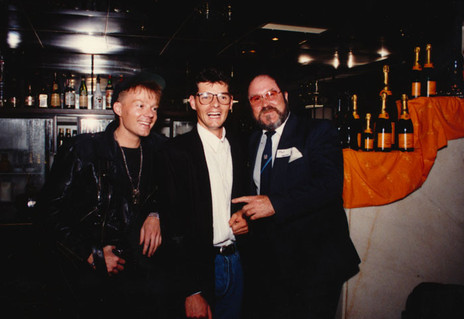
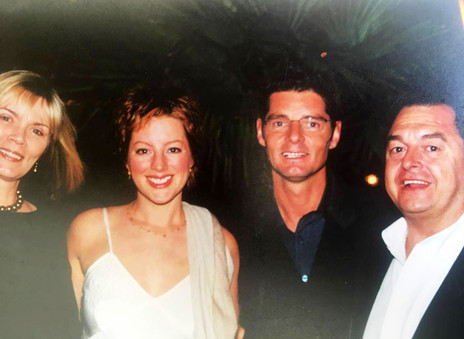
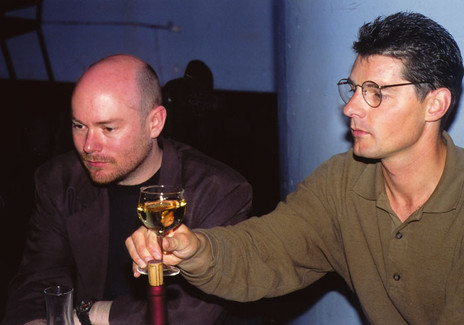
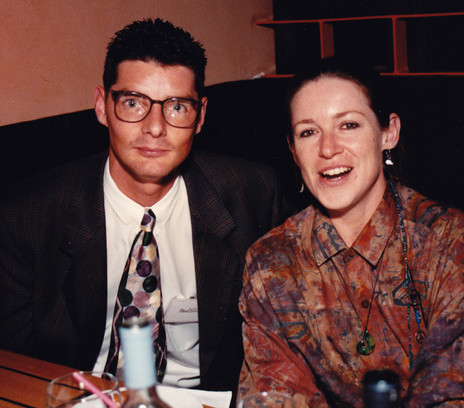
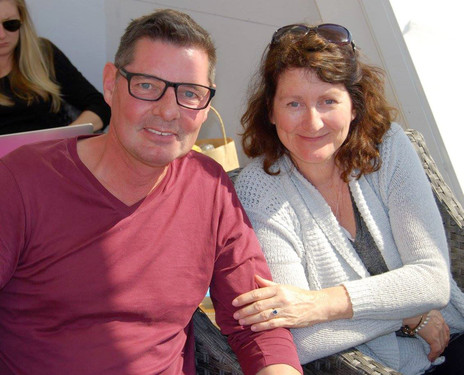
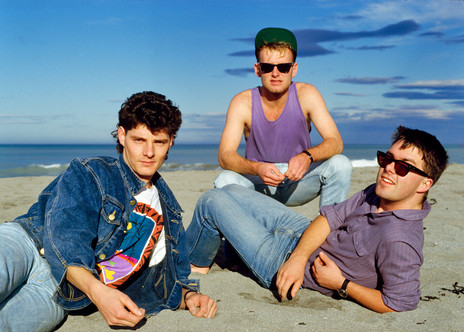
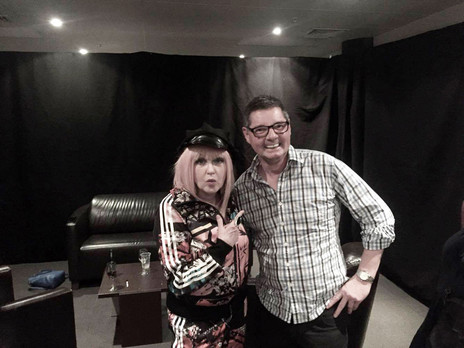
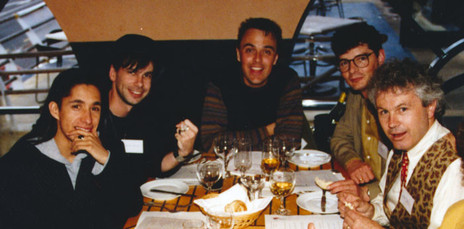
Paul Ellis has been a Starship Foundation Board Director since 2015. He was the executive producer for the 2012 and 2013 Starship Christmas albums that sold 50,000 albums and raised $490,000.
Sony
Visit our sister site
NZ On ScreenMade with funding from
NZ On Air